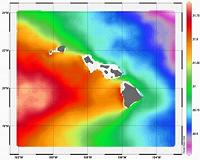 |
Minneapolis MN (SPX) Aug 05, 2010 Xcel Energy has released preliminary results from its wind-to-battery storage project in Minnesota, and the bottom line is the technology works. Integrating variable wind and solar power production with the needs of the power grid is an ongoing issue for the utility industry. In October 2008, Xcel Energy began testing a one-megawatt battery-storage technology to demonstrate its ability to store wind energy and move it to the electricity grid when needed. It is first use of the technology in the United States for direct wind energy storage. "We have proved that this technology can perform the functions of storage that we were looking for to help us manage the variability of wind energy on our operating system," said Frank Novachek, Xcel Energy director of corporate planning. "The success of this technology is important to both Xcel Energy - the nation's leader in wind power distribution - and our customers, and we are greatly encouraged by these results." The preliminary test results indicate that the battery has the ability to: + Effectively shift wind energy from off-peak to on-peak availability + Reduce the need to compensate for the variability and limited predictability of wind generation resources + Support the transmission grid system by providing voltage support, which contributes to system reliability + Support regional electricity market by responding to real-time imbalances between generation and load Results also indicate that this technology may be applicable for solar energy. The complete report is available at Battery Energy Storage Click on: Milestone #5. Testing will continue to determine the technology's ability to facilitate integration of larger penetrations of wind energy on the grid. Phase II of the study will also assess the potential value of the various battery system functions and determine the potential cost effectiveness of the technology. A final report is expected in summer 2011. The project is being conducted in Luverne, Minn., about 30 miles east of Sioux Falls, S.D. The battery installation is connected to a nearby 11-megawatt wind farm owned by Minwind Energy, LLC. Collectively, the 20 50-kilowatt battery modules are roughly the size of two semi trailers and weigh approximately 80 tons. They are able to store about 7.2 megawatt-hours of electricity, with a charge/discharge capacity of one megawatt. Fully charged, the battery could power 500 homes for more than 7 hours. Xcel Energy purchased the battery from NGK Insulators Ltd. The sodium-sulfur battery is commercially available and versions of this technology are in use elsewhere in the U.S. and other parts of the world, but this is the first U.S. application of the battery as a direct wind energy storage device. In addition to NGK, partners in the project with Xcel Energy include: S and C Electric, the University of Minnesota, the National Renewable Energy Laboratory, the Great Plains Institute and Minwind Energy, LLC, and Gridpoint. Xcel Energy is testing emerging technology and energy storage devices as part of its overall Smart Grid strategy, which modernizes and upgrades the grid to allow for easier integration of renewable energy sources.
Share This Article With Planet Earth
Related Links Xcel Energy Powering The World in the 21st Century at Energy-Daily.com
 Generating Energy From Ocean Waters Off Hawaii
Generating Energy From Ocean Waters Off HawaiiCollege Park MD (SPX) Aug 05, 2010 Researchers at the University of Hawaii at Manoa say that the Leeward side of Hawaiian Islands may be ideal for future ocean-based renewable energy plants that would use seawater from the oceans' depths to drive massive heat engines and produce steady amounts of renewable energy. The technology, referred to as Ocean Thermal Energy Conversion (OTEC), is described in the Journal of Renewable ... read more |
|
| The content herein, unless otherwise known to be public domain, are Copyright 1995-2010 - SpaceDaily. AFP and UPI Wire Stories are copyright Agence France-Presse and United Press International. ESA Portal Reports are copyright European Space Agency. All NASA sourced material is public domain. Additional copyrights may apply in whole or part to other bona fide parties. Advertising does not imply endorsement,agreement or approval of any opinions, statements or information provided by SpaceDaily on any Web page published or hosted by SpaceDaily. Privacy Statement |